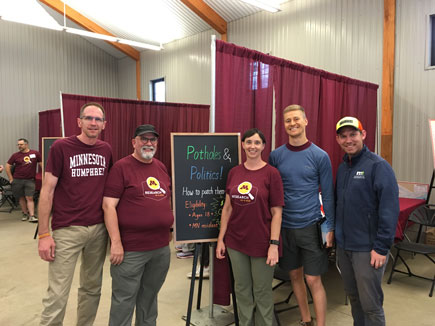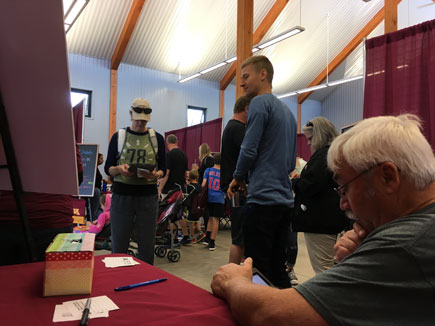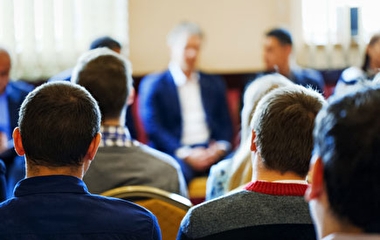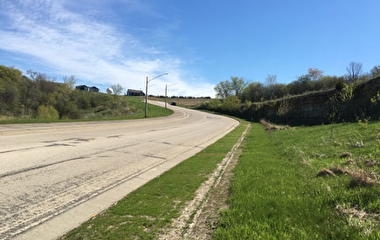Ben Gronowski, and James Skoog
Transportation researchers connected with attendees and collected data for their studies at the 2018 Minnesota State Fair.
Kathy Quick, associate professor in the Humphrey School of Public Affairs, asked fairgoers what they think about Minnesota’s transportation infrastructure as part of her study titled “Potholes and Politics! How to Patch Them Up?” Quick and her collaborator Guillermo Narváez were aided by seven graduate students and five volunteers from MnDOT. “We asked participants to take three to five minutes to share their opinions about what to do,” Quick says. “Raise the gas tax? Build more roads and/or more transit? Do nothing?”
Quick’s booth had more than 750 participants in just four half-day sessions. “The unique opportunity of the fair allowed us to gather high-quality data to inform policy decisions on an important issue,” Quick says. “Working side-by-side with MnDOT staff, we were able to scope a research project with high public value.”
Quick also notes that the graduate students, from four different degree programs, volunteered so they could interact with the public around these issues and get coaching and experience with social science research design and protocols. CTS sponsored the exhibit space.
In another study, a team led by Nichole Morris, director of the U’s HumanFIRST Lab, asked participants a series of questions about their sleep patterns and driving behaviors. Next, the researchers asked the participants—184 of them during four half-days—to look into a device with two lights that flickered at different speeds. “Similar to a hearing test, the volunteers responded when they saw the flickering light and again when it appeared steady state,” Morris says.
The data will help the team establish norms for how people typically score on the visual test, called the critical flicker frequency (CFF), that they are investigating for its ability to predict fatigue. “The data will be used in a later part of our research study in which we will compare alert CFF scores to sleep-deprived subjects in our driving simulation study,” Morris says.
Preliminary analyses show that CFF scores had a statistically significant relationship to the frequency of how often people report having sleep problems during the week, how many hours of sleep they reported, and their age, she says.
Like Quick, Morris says the fair provided a “tremendous opportunity” to recruit and collect data from a very large sample in a short time. It also provided easy access to people from areas across the state in a wide range of ages, including an older population of research subjects (ages ranged from 18 to 80, with an average age of 41). “I am so grateful for the people who incorporated supporting University of Minnesota research while they were at the fair,” she says.
Catalyst will share results of the studies in future issues.




